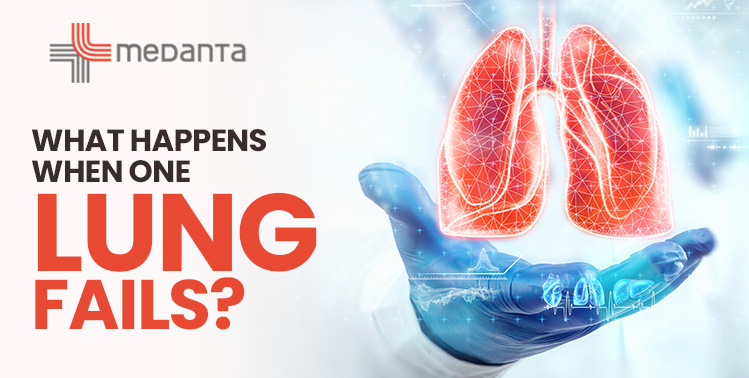CH Baktawar Singh Rd, Medicity, Islampur Colony, Sector 38, Gurugram, Haryana 122001

30 July, 2024
adminLung failure is a serious medical condition that has several possible underlying causes. Symptoms include shortness of breath, rapid breathing, and confusion. To prevent the condition from growing worse, receive emergency medical attention as soon as you notice any signs of respiratory failure. See renowned thoracic surgeon and lung disease specialist Dr. Harsh Vardhan Puri for complete care and skilled attention. His knowledge can help you make the greatest decisions regarding your diagnosis, available treatments, and recuperation.
Even though having just one lung that functions or having one lung fail might be a serious medical problem, many individuals can nevertheless lead reasonably normal lives with the right medical care and lifestyle modifications.
This blog will look at the complications, adjustments, and prognosis for this illness.
The vital organs that facilitate gas exchange—allowing carbon dioxide to leave the body and oxygen to enter the bloodstream—are the lungs. There are two lobes in the left lung and three in the right. Each lung has these divisions. When one lung fails, it indicates that major sections of the lung or the lung as a whole are not working properly.
Also Read :Pneumothorax Treatment In Delhi and Gurgaon
There are several causes of lung failure, including:
Compared to two lungs, most people can survive with just one lung if necessary. One lung can usually expel enough carbon dioxide and create enough oxygen, provided the other lung is not damaged.
One lung can be missing while the other can still work rather well. Even though the lungs are vital organs, diseases like cancer or other conditions might impede lung function, prompting your doctor to suggest lung removal.
The medical word for surgery to remove the lung is a pneumonectomy. One lung is not too tough to live with once you recuperate from the treatment. It won’t be difficult for you to carry out routine tasks. The procedure shouldn’t have any effect on the remaining lung. You should eventually be able to resume most of your previous activities, but you may need to modify your strategy.
Nevertheless, each person is unique, and certain considerations must be made in each situation based on the individual’s lung function and any additional issues they may be facing.
A person can survive for a very long period with just one lung, depending on their general health and the state of the remaining lung. It does, however, take some getting accustomed to living with one lung.
A person will likely need to learn to slow down and adapt to this transition since, unlike when they had two lungs, they will not have their full lung capacity.
It is not usually the case that one lung is lost and one is always fatigued, unlike what most people imagine. Even though they might have to progressively reduce their usual activities, the person should be able to lead a very normal life with just one lung.
Also read: Lung Transplant In Delhi
Also read: Lung Transplant Surgery In Delhi
Hold onto hope if you have to have a lung removed due to a single lung failure. Sure, it will be difficult, but having a lung removed shouldn’t significantly affect someone who is normally healthy. You’ll have to recognise your limitations in every situation. Even though you shouldn’t expect to regain full lung function following lung removal, you should be able to do the majority of jobs rather regularly.
It’s critical to comprehend the effects of lung failure, make the required modifications, and maintain a proactive approach to healthcare management. Anyone in this position must collaborate closely with medical professionals to create a thorough strategy that is customised to meet their requirements and situations.
To ensure a smooth treatment path, speak with Dr. Harsh Vardhan Puri, the distinguished specialist in lung disorders and thoracic surgery. You may better understand your illness and make decisions about how to proceed with treatment and recovery with the support and knowledge of Dr. Puri.
Category : Lung Cancer Treatment
Tags: